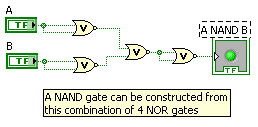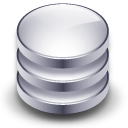1. What program included in windows can be used to record sound?
A) Media Recorder
| Mesh network topology, own work (Photo credit: Wikipedia) |
B) Sound Player
C) Media Player
D) Sound Recorder
2. Which of the following is not database program?
A) DB2
B) Fox-pro
C) Ms Access
D) Ms Excel
3. Which of the following is/are HTML tags type?
A) Paired Tags
B) Singular Tags
C) Both of the above
D) None of the above
4. Which of the following is are Network topology?
A) Mesh Topology
B) Ring Topology
C) Hybrid Topology
D) All of the above
5. Which of the following is not a data type?
A) Picture/Graphic
B) Date/Time
C) Text
D) Number
6. An organized collection of logically related data is known as ...
A) Data
B) Meta data
C) Database
D) DBMS
7. Which is/are Network protocols?
A) TCP/IP
B) IPX/SPX
C) NetBEUI
D) All of the above
8. A character is equal to ..
A) One Bit
B) One Byte
C) Bits
D) All of the above
9. Which of the following input devices is also known as memory device?
A) Keyboard
B) Punch Cards
C) Joystick
D) None of them
10. A programming language that uses binary codes in ..
A) Machine Language
B) Assembly Language
C) High Level Language
D) All of the above
Answers:
1. What program included in windows can be used to record sound?
D) Sound Recorder
2. Which of the following is not database program?
D) Ms Excel
3. Which of the following is/are HTML tags type?
C) Both of the above
4. Which of the following is are Network topology?
D) All of the above
5. Which of the following is not a data type?
A) Picture/Graphic
6. An organized collection of logically related data is known as ...
C) Database
7. Which is/are Network protocols?
D) All of the above
8. A character is equal to ..
B) One Byte
9. Which of the following input devices is also known as memory device?
B) Punch Cards
10. A programming language that uses binary codes in ..
A) Machine Language
Related Posts:
Objective Questions and Answers on Computer Basis set-5
Computer Fundamental Multiple Choice Question set-6
Objective Questions on Computer Fundamentals set-7
MCQ on Computer Fundamentals with Answers set-8
Computer Basis MCQ Questions and Answers set-9
Computer Fundamental Questions and Answers set-10
Interview MCQ Questions of Computer Fundamentals set-3










